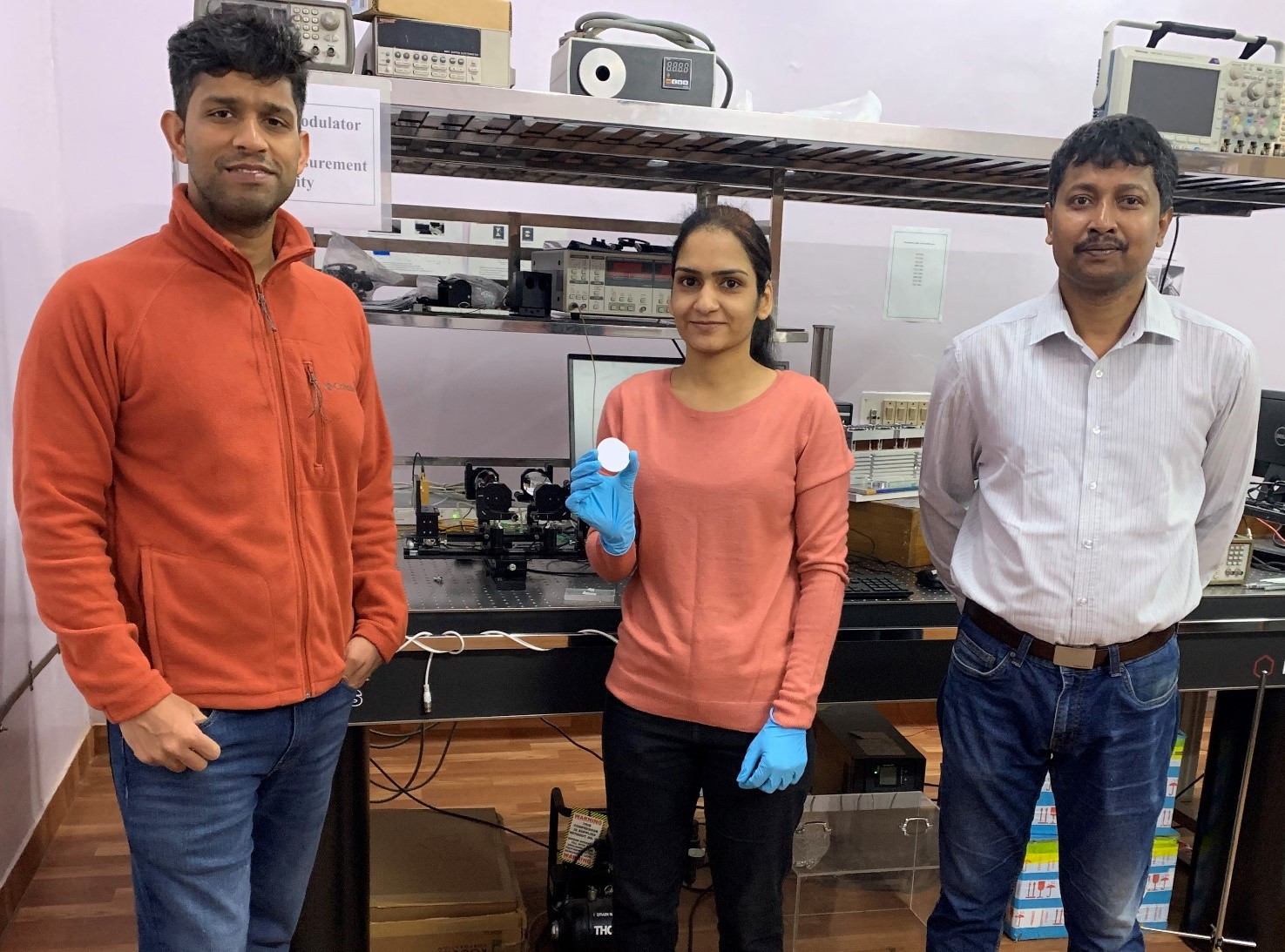
New Delhi: Researchers at IIT Delhi have developed a novel device capable of producing high-intensity radiation at frequencies beyond the capabilities of current 6G communication technologies.
This significant advancement was achieved by the research group led by Assistant Professor Rahul Mishra and Professor Samaresh Das at the IIT Delhi’s Center for Applied Research in Electronics (CARE), in collaboration with Professor Yang Hyunsoo from the National University of Singapore. Ms Pinki Yadav, a research scholar at IIT Delhi, spearheaded the design and fabrication of this pioneering device, with critical measurements conducted at NUS.
Dubbed a spintronic terahertz (THz) emitter, the device operates through a bilayer system composed of ferromagnetic and non-magnetic materials. The team at IIT Delhi innovated by developing a semimetal material in their laboratory using platinum, which was then paired with a layer of cobalt. This combination enables the device to generate high-intensity pulses at the terahertz frequency range, nearing 1012 Hz.
Professor Rahul emphasized the motivation behind this development, noting, “Existing sources for this frequency range face limitations such as narrow bandwidths, low emission strength, and the need for low-temperature operations. Our goal was to create an emitter that not only provides enhanced emission strength but also functions efficiently at room temperature, making it suitable for practical, real-time applications.”
The implications of this THz technology are broad and significant, as highlighted by Professor Samaresh. He remarked, “Terahertz technology, with its high-frequency radiation emission capabilities, holds the potential to revolutionize various aspects of our daily lives. Its non-invasive nature is particularly advantageous for medical imaging, enabling doctors to visualize the interior of the human body safely, without the risks associated with conventional X-rays.”
Research scholar Pinki Yadav, reflecting on the communication applications, added, “In the realm of telecommunications, THz waves can facilitate faster and more secure wireless networks, significantly enhancing the speed and reliability of our internet connections.”
The culmination of this research was recently published in ACS Nano Letters, a prestigious journal by the American Chemical Society renowned for its focus on nanomaterials and devices. The article can be accessed using the link:
